Inventions and discoveries are two separate entities and are not the same. Inventions are the creation of a new product or a process to solve a problem or to unravel the mysteries around things.
For example, the toilets we use, refrigerators, ovens, the electricity to run them, solar panels, thermometers, aircraft, cars, telescopes, phones, and much more. In fact, the progress of our society is attributable to each and every invention, especially electricity.
Discoveries, on the other hand, are things that already exist but we do not know of their existence and when we find them it is called discovery.
As an example, scientists are discovering the remains of many new species of dinosaurs and it is helping us better understand each species of dinosaur, its diet, and its ecology. Many civilizations lost to environmental impacts are being discovered that is adding to the already existing information about these civilizations or newer civilizations in the least expected places are being discovered continually amazing us.
Searches in new cave systems are yielding new and interesting information about past human race and how they went about their business. What did they eat? How did they deal with the cold? How did they go extinct? We are discovering all these aspects through numerous scientific surveys.
9 Interesting Inventions of the year 2022
Here are 9 interesting inventions of the year 2022 that have amazed us, these range from the James Webb Space Telescope to the concept of personalized departure board notifications.
James Webb Space Telescope
James Webb Space Telescope is the new kid on the block from NASA enabling us to get a dazzling view of the universe.

At the cost of $9.7 billion and more than two decades of intense work, this telescope was launched using the Ariane 5 rocket from French Guiana on the day of Christmas in December 2021.
The James Webb Space Telescope (sometimes called JWST) is a large infrared telescope with a 6.5-meter primary mirror. The telescope is located hundreds or thousands of miles away from earth’s orbit, but in its shadow to protect it from the Sun.
JWST’s biggest feature is a tennis court-sized five-layer sunshield that attenuates heat from the Sun more than a million times. The telescope’s four instruments – cameras and spectrometers – have detectors that can record extremely faint signals.
What can it do?
JWST with its infrared vision can peer back over 13.5 billion years to see the first stars and galaxies forming out of the darkness of the early universe.
JWST’s unprecedented infrared sensitivity will help astronomers to compare the faintest, earliest galaxies to today’s grand spirals and ellipticals, helping us to understand how galaxies assemble over billions of years.
JWST can see right through and into massive clouds of dust that are opaque to earlier telescopes like the Hubble, where stars and planetary systems are being born.
JWST can tell us more about the atmospheres of extrasolar planets, and perhaps even find the building blocks of life elsewhere in the universe.
In addition to other planetary systems, JWST will also study objects within our own Solar System.


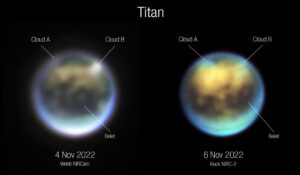
Every single time it sends back images to earth we are all bedazzled by the depth of information captured and are amazed as to how using this space telescope we are getting to know the time before our universe began. Very exciting times to be alive in!
First Autonomous OPV BLACK HAWK® Helicopter Flight
By significantly enhancing flight safety and operations, Sikorsky and the U.S. Defense Advanced Research Projects Agency (DARPA) have made it easier for people and machines to team up in the field.
Sikorsky paved the way for a time when airplanes can be flown with or without pilots in a variety of challenging conditions, such as crowded, congested, or visually impaired areas.

In February 2022, the fully autonomous Model A BLACK HAWK OPV (optionally-piloted vehicle) aircraft (S-70™ BLACK HAWK® helicopter), identifiable by DARPA’s logo and tail number N60-OP, equipped with ALIAS (Aircrew Labor In-Cockpit Automation System) completes a pre-flight checklist, starts its engines, spins up its rotors and takes off with no crew or pilot onboard for a full 30-minutes.
In the month of October 2022, the OPV Black Hawk safely and reliably performed internal and external cargo resupply missions and a rescue operation highlighting how utility helicopters could one day fly complex missions in reduced crew or autonomous mode.
Do you know we have a DART to deflect the huge space rocks that come hurtling toward earth and prevent us from going the way the dinosaurs went!
What is DART and what does it do?
As part of the plan to test asteroid deflection strategies, Double Asteroid Redirection Test (DART) was conceived. DART is a joint project by NASA and the Johns Hopkins Applied Physics Laboratory. It was made to measure how much a spacecraft’s impact deflects an asteroid by transferring momentum when it collides with the asteroid head-on.
DART was the first-ever mission dedicated to investigating and demonstrating one method of asteroid deflection by changing an asteroid’s motion in space through kinetic impact.
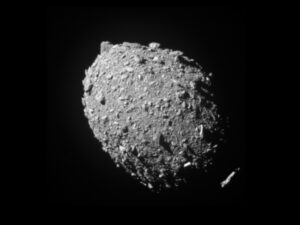
The DART probe was launched from Earth on 24 November 2021, and on 26 September 2022, it impacted the asteroid moonlet Dimorphos, a small body just 530 feet (160 meters) in diameter. It orbits a larger, 2,560-foot (780-meter) asteroid called Didymos.
On 11 October, NASA declared DART a success!
Prior to DART’s impact, it took Dimorphos 11 hours and 55 minutes to orbit its larger parent asteroid, Didymos. The space investigation team has confirmed the spacecraft’s impact altered Dimorphos’ orbit around Didymos by 32 minutes, shortening the 11 hour and 55-minute orbit to 11 hours and 23 minutes
Sounds more like Starwars!!
BioSentinel
The International Space Station, which orbits the Earth at a height of about 250 miles above it and provides a relatively radiation-free environment for astronauts, is a pretty extreme place to live. The Earth’s magnetic field shields the space station crew from much of the radiation in space that can damage the DNA in our cells and lead to serious health problems.
However, in recent years missions have been planned to explore deep space beyond the realms of the earth. One such mission is the Artemis programme wherein 3 Artemis missions are currently in progress: Artemis 1, an uncrewed test flight which will circle and fly past the Moon.
Artemis 2, a crewed flight beyond the Moon, which will take humans the furthest they’ve ever been in space.
Artemis 3, which will land the first female astronaut and first astronaut of colour on the Moon, and involve spending a week performing scientific studies on the lunar surface.
When future astronauts set off on long journeys deeper into space, such as Artemis 2 they will be venturing into more perilous radiation environments and will need substantial protection.
With the help of biological experiments within a small satellite called BioSentinel, scientists at NASA’s Ames Research Center, in California’s Silicon Valley, are taking an early step toward finding solutions.

What is BioSentinel?
BioSentinel is the first long-duration biology experiment to take place beyond where the International Space Station orbits near Earth.
BioSentinel’s spacecraft is one of 10 CubeSats that has been launched aboard Artemis I, the first flight of the Artemis program’s Space Launch System, NASA’s powerful new rocket.
The cereal box-sized BioSentinel will travel to deep space on the rocket and then fly past the Moon in a direction to orbit the Sun.
Once the satellite is in position, beyond our planet’s protective magnetic field, the BioSentinel team will trigger a series of experiments remotely, activating two strains of yeast to grow in the presence of space radiation.
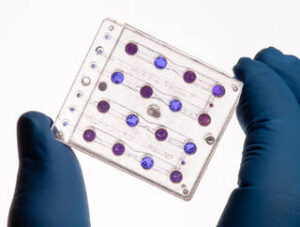
One strain has trouble repairing its DNA, whereas the other is a more common strain of yeast found in nature.
Researchers will learn more about the health risks posed to astronauts during long-term exploration by comparing how the two strains react to the deep space radiation environment and will be able to create informed strategies for minimizing potential harm.
According to latest updates, NASA has started its biology experiments on the BioSentinel on 6th December 2022!
Printable solar panels
Like how plastic bank notes are printed, printable solar cells are created by printing a specially developed “solar ink” onto plastic film. These 3D-printed solar cells are cheaper, easier to produce, and deployable easily and fast.
These are presently being printed on plastic film that is less than 0.1 millimeters thick.
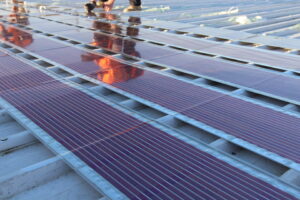
Presently UK sustainable energy advocate Stuart McBain along with Professor Paul Dastoor from the University of Newcastle, New South Wales, who invented the recyclable solar cell sheets are on an experimental EV car all around the Australian coastline powered exclusively by the printable solar sheets.
HydroSkin
Urban architecture is significantly impacted by high temperatures and heavy rainfall accompanied by severe flooding events, which leads to significant property damage and personal injuries.
Today’s building practices show a preference for tall buildings than to have shorter, wider ones with large surface areas.
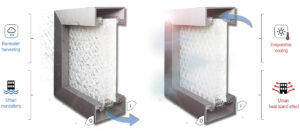
HydroSkin is a lightweight textile- and film-based element or skin applied on the façade of buildings and is made of three layers, which keep the dust away, harvest rainwater during rains, and the third layer has an open porous structure with a large surface area, allowing for high air circulation, favoring evaporation and faster cooling. These properties combine to reduce the cost of use of air conditioners and fans and emissions into the environment.
This was invented by the Institute for Lightweight Structures and Conceptual Design (ILEK) at the University of Stuttgart, Germany.
Powerfoyle
This is a ground-breaking patented solar cell material by Exeger, that works on the lines of photosynthesis in plants and absorbs all forms of indoor and outdoor light and converts it into clean, endless energy.
The Exeger Powerfoyle material can be used on any product that benefits from being charged, thanks to its strong, adaptable, and customizable design.
Whether a person is using headphones to listen to music while driving to work or reading an e-book in their living room, Powerfoyle will power these products.
Any kind of ambient light would do, light in your home or even very less light on a cloudy winter day will do, no need of direct sunlight to charge your devices.
No more charging, no more cables, no more hassle!
Recently, in August 2022 Exeger in collaboration with Adidas released self-charging headphones powered by Powerfoyle.
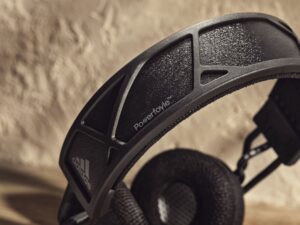
It is also commercially used in the self-charging headphone by Urbanista, Los Angeles, and the world’s first self-powered bicycle helmet, POC Omne Eternal.

Photographers, check this out!
Nikon Z9
The arrival of a true next-generation flagship mirrorless camera is finally here. Fast, strong, and reliable in a huge variety of situations.
It has the world’s best AF scene detection system and best-in-class 8K video resolution and internal recording.
The Z9 has the world’s fastest still image frame rate of 120fps! and, the world’s fastest scanning speed which makes it a dream for sports and animal photographers!
And…
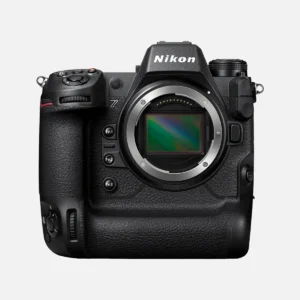
The Z9 is the world’s first truly blackout-free electronic viewfinder and easily the first Nikon camera that comes with 4-axis vertical and horizontal tilting monitor.
The Z 9 can automatically without any menu changes detect and track the widest variety of subjects in stills and video, including people, dogs, cats, birds, cars, motorcycles, bicycles, trains, and airplanes, thanks to a ground-breaking algorithm developed using deep learning.
Even when they are small in the frame, obscured by hair, glasses, or goggles, right-side up, or upside down, Eye Detection AF automatically tracks the eyes of people, dogs, cats, and birds.
PARALLEL REALITY™ Experience by Delta Airlines
Delta Airlines in collaboration with Misapplied Sciences have launched the world’s first-ever parallel reality departure boards at Detroit Metropolitan Airport, where up to 100 different customers can look at a single departure board and see their own personal flight information, and no one else’s.

Visitors can choose to participate in the parallel reality experience by signing up at the Delta counter at Concourse A in the McNamara Terminal, near the Delta Sky Club, simply by scanning a digital or paper boarding pass.
Your private zone is continuously moved to a new location as you move around thanks to the non-biometric overhead sensor. You can move around the viewing area and still see your own personalized content thanks to this.
Innovations such as these and many more give us hope to learn so much more, to explore, save lives, reduce emissions, and be better than what we are already.
Do checkout the following websites to know more about these inventions.
https://www.exeger.com/powerfoyle/
https://www.nasa.gov/mission_pages/webb/main/index.html
https://www.nasa.gov/centers/ames/engineering/projects/biosentinel.html
https://www.darpa.mil/news-events/2022-02-08
https://www.nikonusa.com/en/nikon-products/product/mirrorless-cameras/z-9.html
Public debut of printed solar cells
https://onlinelibrary.wiley.com/doi/pdf/10.1002/cend.202200003
1 thought on “9 Interesting Inventions of the year 2022”